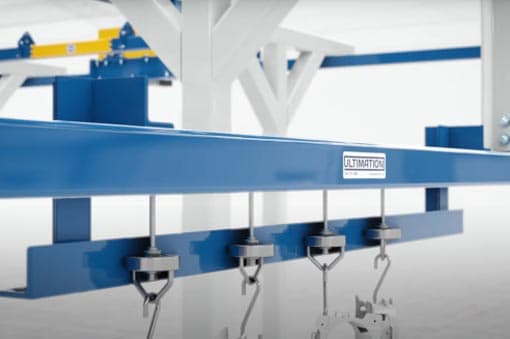First of all, it’s important to recognise that overhead chain conveyors can be extremely powerful machines. They’re designed to move heavy loads, and they do so by using a chain that runs along a track suspended from the ceiling. If someone gets caught in the chain or the track, the results can be catastrophic. That’s why it’s important to always be aware of the dangers when working with these machines.
One of the biggest dangers of working with overhead chain conveyors is the risk of getting caught in the chain or the track. If a worker’s clothing, hair, or body becomes entangled in the conveyor, they can be seriously injured or even killed. That’s why it’s so important to always wear the proper personal protective equipment (PPE) when working around these machines. This includes things like hard hats, safety glasses, and steel-toed boots, as well as clothing that fits properly and is not loose or baggy.
Another danger of working with overhead chain conveyors is the risk of falling objects. When heavy loads are being moved around above your head, there is always a risk that something could fall and hit you. That’s why it’s important to always be aware of your surroundings and to stay out of the way of moving loads. If you need to be in an area where loads are being moved, make sure you wear a hard hat and stay alert at all times.
One of the most important safety recommendations when working with overhead chain conveyors is to always follow the manufacturer’s instructions and guidelines. These machines are designed to be used in a specific way, and deviating from the manufacturer’s recommendations can be extremely dangerous. If you’re not sure how to use the conveyor or if you have any questions or concerns, be sure to ask your supervisor or a qualified expert for help.
It’s also important to make sure that the conveyor is properly maintained and inspected on a regular basis. This includes things like checking the chain for wear and tear, making sure that the track is clean and free of debris, and checking that all of the safety mechanisms are working properly. If you notice any issues with the conveyor, be sure to report them to your supervisor right away.
Another important safety recommendation when working with overhead chain conveyors is to always use proper lifting techniques when moving heavy loads. This includes things like lifting with your legs instead of your back, using proper lifting straps and equipment, and avoiding awkward positions that could cause strain or injury. If you’re not sure how to lift a heavy load safely, be sure to ask for help or refer to the manufacturer’s instructions.
Finally, it’s important to always be aware of the potential dangers of working with overhead chain conveyors, and to take steps to minimise those risks. This includes things like staying alert and focused at all times, avoiding distractions like cell phones or other devices, and being aware of your surroundings. If you see something that doesn’t look right or if you feel uncomfortable about a situation, don’t hesitate to speak up and report your concerns to your supervisor.
In conclusion, working with overhead chain conveyors can be a safe and effective way to move heavy loads around a facility, but it’s important to recognise the potential dangers and to take steps to minimise those risks. Always wear the proper PPE, follow the manufacturer’s instructions and guidelines, and use proper lifting techniques when moving heavy loads. Regular maintenance and inspections are also important, as is staying alert and aware of your surroundings. By taking these safety recommendations seriously, you can help prevent accidents and injuries when working with overhead chain conveyors.
![]()






